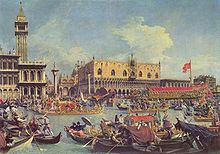Analytical Exposition
Analytical Exposition – An analytical exposition is a type of spoken or written text that is intended to persuade the listeners or readers that something is the case. To make the persuasion stronger, the speaker or writer gives some arguments as the fundamental reasons why something is the case. This type of text can be found in scientific books, journals, magazines, newspaper articles, academic speech or lectures, research report etc. Analytical expositions are popular among science, academic community and educated peoplePurpose:
- To persuade the reader or listener that there is something that, certainly, needs to get attention
- To analyze a topic and to persuade the reader that this opinion is correct and supported by arguments
Examples: argumentative essay, exploratory essay
Generic Structure:- Thesis : Introduces the topic and shows speaker or writer’s position; Outlines of the arguments are presented.
- Arguments : It consists about Point and Elaboration Point, states the main argument Elaboration, develops and supports each point of argument
- Conclusion : Reiteration (restatement), restates speaker or writer’s position
- Focus on generic human and non-human participants, e.g.: car, pollution, leaded petrol car
- Use abstract noun, e.g.: policy, government
- Use of relational processes, e.g.: It is important
- Modal verbs, e.g.: we must preserve
- Modal adverbs, e.g.: certainly we.
- Connective or Use of internal conjunction to state argument, e.g.: first, secondly, then, finally)
- Evaluative language, e.g.: important, valuable, trustworthy, etc.
- Giving reasons through causal conjunction
- (e.g. so, thus, therefore, hence)
- Use of present tense
- Passive sentence
SHOULD CHILDREN WEAR HATS AT SCHOOL?
(Statement of position):
I believe that you should always wear a hat at school when you are playing outside , to stop you from getting sunburn.(Statement of position):
(Argument 1):
Firstly, if you don’t wear a hat, you will get sunburn ant the sunburn is painful.
(Argument 2):
Secondly, sunburn could lead to skin cancer. Sunburn can lead to health problems later in life. Many older people suffer from skin cancer which can kill them.
(Reinforcement of position statement):
In my opinion all school students should wear hats.
The Importance of English
Thesis { I personally think that English is the world’s most important language. Why do I say that?Argument 1 { Firstly, English is an international language. It is spoken by many people all around the world, either as a first or second language.
Argument 2 { Secondly, English is also the key which opens doors to scientific and technical knowledge, which is needed for the economic and political development of many countries in the world.
Argument 3 { Thirdly, English is a top requirement of those seeking jobs. Applicants who master either active or passive English are more favorable than those who do not.
Conclusion { From the fact above, it is obvious that everybody needs to learn English to greet the global era.
The Importance of Education
I personally think that education is
very important for us as Indonesian teenager who will take over values,
good morals, culture and knowledge. We also bring the future of
Indonesia nation in the middle of world global civilization.
The condition of education in Indonesia
is terrible. Why do I say that? In fact, there are many regions that
have not been reached by good education. If the condition is going like
this, I am sure it is difficult for Indonesia to be a prosperous
country. How can it be? As we all know, a prosperous country must have a
good basic education, because by having good education, people will get
job easily, good life. Due to this reason, it makes the country
prosperous.
To improve education system in Indonesia,
the government has tried to provide education evenly to all part of
Indonesian and to apply suitable education system that can make people
clever and civilized. So, Indonesian can life better in this modern and
sophisticated era. By the existence of education in our country, we will
be able to reach the degree of knowledge or science. Besides, the
Indonesian human resources will be equal with people in all around the
world.
In short, it is obvious that as young Indonesian generation, education is very important.
——————————————-










